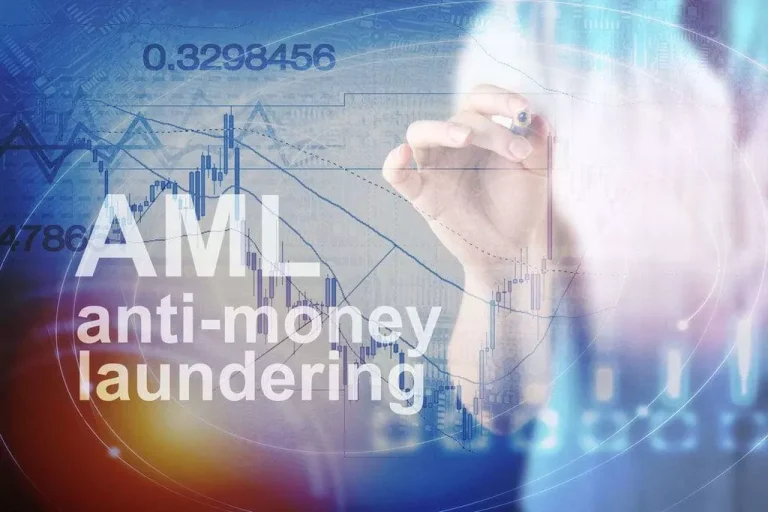Content
Most ETPs are designed to track the performance of an underlying index; however, sometimes their performance may diverge. So-called “tracking error” occurs when the returns of the ETP deviate from Decentralized finance the returns of its underlying benchmark, which can impact investor performance (either negatively or positively). An ETP’s price also might diverge significantly from the underlying value of its portfolio if, for example, there’s a disruption in the share redemption or creation process. Investors purchasing or selling ETNs or shares of an ETP through an investment professional typically pay a brokerage commission on each transaction, as with purchases of individual stocks. Depending upon your level of trading, the sales charges you pay for each purchase or sale could erode your investment return. Exchange-traded products have become an important component of modern investing, offering investors a range of benefits and investment options.
Definition of Exchange-Traded Products (ETPs)
This is in contrast to traditional mutual funds which are only available for buying and selling at certain points in the day. Additionally, differences in the bid and ask—the buy and sell—price could add to the cost of trading ETPs. Some no-load or no-fee mutual funds, on the other hand, can be bought and sold without any trading commission. Investors large and small appreciate the fact that these investments are etp vs etf understandable, reliable, and liquid.
Risks and Considerations in ETP Investing
It has assets of about $455 billion, an expense ratio of 0.03%, and five-year returns of 15.02%. At third https://www.xcritical.com/ is another S&P 500 index fund, the Vanguard S&P 500 ETF (VOO), with an AUM of about $435 billion, an expense ratio of 0.03%, and five-year returns of 15.01%. The largest bond ETF is the Vanguard Total Bond Market ETF (BND), with about $104 billion in AUM, an expense ratio of 0.03%, and five-year returns of 0.37%. These hold a broad range of securities from countries outside the U.S., providing exposure to international markets. Some focus on mature and growth-oriented markets, enabling you to diversify beyond your country’s borders.
What are the costs associated with investing in ETPs?
This low turnover means fewer sales of stocks that have risen in price, resulting in the generation of less realized capital gains. The deep liquidity of ETFs — the speed with which they can be bought and sold — comes from the markets on which they are traded. ETFs trade on exchanges and investors can buy or sell throughout the trading day, just like stocks. ETFs offer investors the ease of stock trading, low-costs, tax-efficiency, and the diversification benefits of mutual funds. Hedgers use exchange traded derivatives to manage their financial risks by offsetting their exposure to price movements in the underlying asset. Investors can buy shares in U.S.-listed companies from the U.K., but due to local and European regulations, you’re not allowed to purchase U.S.-listed exchange-traded funds (ETFs) in the U.K.

Exchange-Traded Product Characteristics
Furthermore, the ETF’s presence on an exchange assures fluidity and transparency. This setup empowers investors to seamlessly modify their investment stance based on evolving market trends. These products have garnered significant attention due to their ability to provide exposure to various asset classes, from equities to commodities. They present a potent tool for investors, granting them a streamlined and economical pathway to delve into a plethora of assets and markets. I’ll break down the basics of exchange-traded products in simple words, making it easy for you to grasp this important investment tool. In January 2024, the SEC relented and allowed the first spot bitcoin (BTCUSD) ETFs to begin trading.
These track the performance of one or more cryptocurrencies, such as Bitcoin. The U.S. Securities and Exchange Commission (SEC) has expressed concerns about market manipulation, liquidity, and the custody of assets on crypto exchanges. This kept futures-based crypto ETFs off U.S. exchanges until 2021, when ProShares Bitcoin Strategy ETF (BITO) was approved. The approval of Bitcoin futures ETFs, like the ProShares Bitcoin Strategy ETF, marked a significant regulatory breakthrough and set a precedent for other futures-based crypto ETFs.
Investors, eager to get a slice of the gold market, can purchase shares of this Gold ETF. By doing so, they get exposure to gold’s price dynamics without the hassle of buying, storing, or insuring the physical metal. Let’s delve into the different types of ETPs to understand their distinct characteristics and how they can fit into an investor’s portfolio. Before investing in any ETF, always review its prospectus and related documents to gain a broad understanding of its goals, risks, fees, and other characteristics.
ETNs offer potential advantages, such as tax efficiency and lower tracking errors. However, they also carry credit risk, as the investor’s return depends on the issuer’s ability to meet its obligations. There are various types of ETFs, including equity, fixed income, commodity, currency, and alternative strategy ETFs. Similar to ETCs, exchange-traded notes (ETNs)are debt securities that do not pay interest.
ETNs do not hold any assets, and their returns are based on the performance of the underlying asset. An Exchange Traded Product (ETP) is a type of financial security traded on an exchange, similar to a stock. They track a specific underlying asset’s performance, such as a commodity, currency, bond, or stock market index. Index ETFs seek to replicate the performance of an underlying index, like the S&P 500. Many ETFs seek to track an index — also known as index or “passive” funds — wherein the ETF manager typically makes less buy and sell trades of underlying assets than an active fund manager does.
ETPs offer a cost-effective and safe way to diversify an investment portfolio by acquiring exposure to an index or asset class. They are passive investments, with typically lower fees than index funds and active mutual funds, making ETPs an easy entry for investors to get exposed to a wide variety of assets. Most ETPs are structured as ETFs, which are registered with and regulated by the SEC as investment companies under the Investment Company Act of 1940. ETFs generally focus their investments in stocks or bonds and have diversification requirements. ETNs, on the other hand, aren’t registered as investment companies because they’re corporate debt and don’t hold an underlying portfolio of assets. ETFs and other ETPs generally combine aspects of mutual funds and conventional stocks.
- Instead, it trades like the shares of a company stock on a public exchange.
- ETFs have grown their assets tremendously, increasing from a negligible amount of total U.S. fund assets to about 30% in late 2023, with much of the rest taken up by mutual funds.
- ETN rates are identical to unsecured and classed bonds, notwithstanding the fact that they relate to the underlying index or asset.
- ETNs and certain ETCs carry counterparty risk, as investors rely on the issuer’s creditworthiness to receive their returns.
- In the United States, for example, the Securities and Exchange Commission (SEC) oversees ETPs.
- Vanguard’s Consumer Staples ETF (VDC) tracks the MSCI US Investable Market Consumer Staples 25/50 Index and has a minimum investment of $1.00.
Historically, the vast majority of ETP activity has occurred in the secondary market, which is where most retail investor trades occur. For information pertaining to the registration status of 11 Financial, please contact the state securities regulators for those states in which 11 Financial maintains a registration filing. Finance Strategists has an advertising relationship with some of the companies included on this website.

However, they also have potential drawbacks, such as tracking errors and liquidity risks. ETPs provide investors with the opportunity to gain exposure to a variety of asset classes, sectors, and strategies through a single tradable instrument. Today, along with offering replication of a stock index, ETPs also allow investors to diversify their investments by providing exposure to asset classes that were historically difficult to reach. However, investors should consider the risks and costs of short-term trading before investing. In January 2024, the Securities and Exchange Commission approved the first Bitcoin Spot ETFs, allowing fund managers to hold Bitcoin and offer exchange-traded shares to investors on official exchanges.
ETP issuers must meet listing and reporting requirements to maintain their listings on stock exchanges and ensure transparency for investors. Unlike some investment instruments, exchange-traded products are released regularly. An exchange-traded product seeks to provide the same yield as the underlying index or asset, providing a diversified investment in a single transaction.
Exchange-traded funds (ETFs) are a type of ETP that hold a basket of securities, typically designed to track the performance of an underlying index. Exchange-traded commodities (ETCs) are debt instruments that do not come with interest payments. They are designed to provide access to an individual product or a basket of items.
The amount of redemption and creation activity is a function of demand in the market and whether the ETF is trading at a discount or premium to the value of the fund’s assets. When an AP sells stocks to the ETF sponsor in return for shares in the ETF, the block of shares used in the transaction is called a creation unit. If an ETF closes with a share price of $101 and the value of the stocks that the ETF owns is only worth $100 on a per-share basis, then the fund’s price of $101 was traded at a premium to the fund’s net asset value (NAV). The NAV is an accounting mechanism that determines the overall value of the assets or stocks in an ETF. ETFs are available on most online investing platforms, retirement account provider sites, and investing apps like Robinhood.

